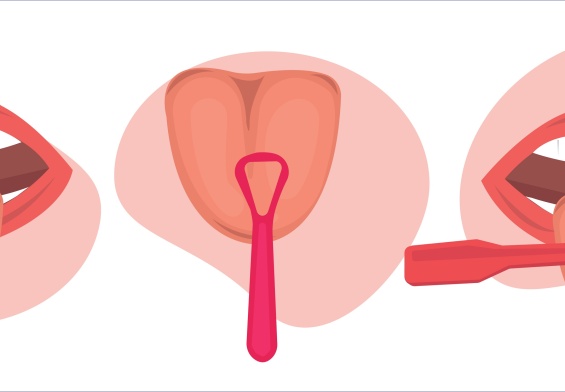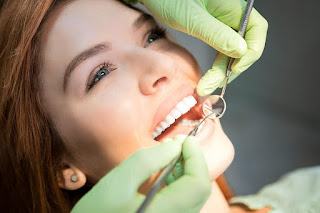Finding the best doctor for TMJ is crucial when jaw pain disrupts your daily life. Temporomandibular joint disorders (TMDs) can make everyday tasks uncomfortable or even painful. Meanwhile, jaw pain, stiffness, clicking, and limited motion are just a few symptoms that can disrupt your life.
TMDs can become more than just inconveniences when they’re left untreated. Ongoing jaw dysfunction may lead to chronic facial pain, recurring headaches, sleep disturbances, tooth damage from grinding, and even emotional stress or anxiety. Untreated TMD can also cause irreversible damage to the jaw joint over time.
If you’re living with these issues, finding the best doctor for TMJ is a key step toward relief. This guide will help you understand what to look for and how to make the right choice.
What Is TMJ and What Causes It?
TMJ refers to the TemporoMandibular Joint, which connects your jawbone to your skull. Disorders affecting this joint are called temporomandibular disorders (TMDs). These conditions can cause pain, clicking, or restricted jaw movement.
TMDs are complex conditions that affect the jaw joint and surrounding muscles. Some are joint-based, while others are muscle-related. Many cases have multiple causes, like stress, trauma, inflammation, clenching, and even your posture.
TMJ and TMD symptoms can vary in duration and intensity, so they’re difficult to diagnose without an expert. TMD has diverse origins, and understanding what causes them plays a big role in treating them. Here are some of the most common:
Common Causes of TMJ Disorders:
- Jaw Injury or Trauma: A blow to the jaw, whiplash, or dislocation can damage the joint’s structure. This leads to inflammation, instability, or misalignment.
- Teeth Grinding (Bruxism): Chronic grinding or clenching puts a lot of pressure on the joint and surrounding muscles. This causes inflammation and strain over time.
- Jaw Misalignment or Malocclusion: When the teeth or jaw don’t align, it can lead to uneven pressure during chewing and speaking. Over time, this strains the joint.
- Arthritis (Osteoarthritis or Rheumatoid): Degenerative joint conditions can affect the cartilage and bone of the TMJ. This reduces joint function and causes pain or stiffness.
- Stress or Anxiety: Increased stress can lead to involuntary clenching of the jaw or tightening of facial muscles. This contributes to chronic strain on the TMJ.
- Joint Disc Displacement: The articular disc inside the TMJ can slip out of position. This causes clicking, locking, or limited movement.
- Connective Tissue Disorders: Conditions like Ehlers-Danlos syndrome may affect the joint’s ligaments and tendons. This leads to instability.
- Habitual Behaviors: Frequent gum chewing, nail biting, leaning on the jaw, or poor posture can overstress the joint. These habits strain supporting muscles over time.
TMDs don’t always have a single identifiable cause. Often, many factors work together to trigger or worsen symptoms. That’s why a comprehensive evaluation by a skilled jaw pain doctor is crucial. They can identify the contributors and choose the best treatment path.
When Should You See a TMJ Specialist?
You should see a TMJ specialist if you experience jaw pain, difficulty chewing, limited jaw movement, clicking sounds, or persistent headaches. Early intervention can help prevent the condition from becoming chronic.
TMJ symptoms can be subtle at first. But, they often worsen over time if not addressed. Here are some of the most common warning signs:
- Persistent Pain in the Jaw, Face, or Neck: This can result from inflammation in the joint or overuse of the surrounding muscles. Chronic pain may interfere with eating, speaking, or sleeping. Left untreated, it may lead to muscle fatigue, worsening inflammation, and heightened sensitivity.
- Limited Jaw Movement or Locking: Difficulty opening or closing your mouth can be caused by disc displacement or joint degeneration. If left unmanaged, this can lead to permanent joint stiffness. This makes routine tasks like eating and oral hygiene difficult or painful.
- Clicking, Popping, or Grinding Noises When Moving the Jaw: These sounds often point to misalignment or a displaced articular disc within the joint. While not always painful at first, they may precede joint damage. They can also develop into more serious locking and mobility issues.
- Earaches or Ringing in the Ears (Tinnitus): The TMJ is near the ear canal, so inflammation there can refer pain or pressure into the ears. Long-term TMJ inflammation may cause chronic ear discomfort. It can also contribute to sensory issues like balance problems or sound sensitivity.
- Headaches or Facial Tension: TMJ dysfunction often involves the muscles that support jaw movement. This includes those in the temples, cheeks, and neck. Constant strain can trigger tension headaches or migraines. Without treatment, this cycle of muscle overuse and pain can do a number on your well-being.
TMDs are also more common in women, especially between the ages of 35 and 44. They frequently co-occur with conditions like fibromyalgia, sleep disorders, and chronic fatigue.
If you’re experiencing any combination of these symptoms, consult a qualified temporomandibular disorder specialist. This helps prevent long-term damage and improves your quality of life.
What Types of Doctors Treat TMJ and TMD?
TMJ disorders can be treated by general dentists, oral surgeons, physical therapists, or orofacial pain specialists. The best doctor for TMJ often has multidisciplinary training and uses conservative, personalized treatment plans.
TMJ disorders are rarely straightforward. They often involve the joint and the surrounding muscles, nerves, and bite alignment. Psychological stress can also be a factor. That’s why the best doctor for TMJ is someone with multidisciplinary training. They understand the interactions between the dental, muscular, and neurological systems.
Providers with experience in orofacial pain management, physical therapy coordination, behavioral health, and non-invasive therapies are more likely to get to the bottom of your symptoms. Moreover, they can treat them effectively.
Conservative treatment is also important. TMJ symptoms often respond well to non-invasive methods. That could mean physical therapy, oral appliances, and behavioral modifications. Providers who start with these approaches help you avoid unnecessary risks from surgery.
A personalized plan is just as important. Because TMJ disorders vary from patient to patient, a one-size-fits-all approach doesn’t really work.
Here’s a breakdown of the most common TMJ treatment providers:
- General Dentists: Often the first point of contact, they may offer splints or recommend lifestyle adjustments.
- Orofacial Pain Specialists: These dentists or physicians have advanced training in managing complex facial pain and jaw disorders.
- Oral and Maxillofacial Surgeons: Reserved for advanced or structural cases that might need surgical evaluation.
- Physical Therapists: Managing muscular dysfunction and improving jaw movement through manual therapy and exercises.
What Happens During a TMJ Consultation?
A comprehensive consultation is the first step in diagnosing TMJ disorders. It also rules out other potential causes of your symptoms. Here’s what it usually involves:
- Medical and Dental History Review Your provider will ask about your health, stress levels, jaw habits (like clenching or grinding), previous dental work, and any history of trauma or arthritis.
- Symptom Assessment You’ll describe your pain, when it occurs, and what makes it better or worse. This helps the jaw joint specialist understand patterns and severity.
- Physical Examination The doctor will examine your jaw’s range of motion, listen for clicking or popping, and feel for tenderness in the jaw muscles and joints.
- Bite and Joint Evaluation They may assess your bite alignment and how your teeth come together. This checks for issues contributing to joint stress.
- Imaging (if needed) If they suspect structural problems, your doctor might order imaging studies like X-rays, MRIs, or CT scans. These provide a better look at the joint and surrounding tissues.
Each of these steps gives your provider a clearer picture of what’s causing your TMJ symptoms. This helps them create a personalized, conservative treatment plan.
How Do TMJ Doctors Treat the Condition?
TMJ doctors often begin with conservative treatments. If they don’t work, they may consider more advanced interventions like injections or surgery.
The best doctor for TMJ tailors treatment plans to the individual and structures them in phases. They start with the least invasive options. TMJ doctors usually follow a step-based approach that progresses only if earlier interventions don’t help. Here’s how treatment is generally categorized:
Conservative Treatments
These are non-invasive and reversible strategies aimed at relieving pain and reducing strain on the joint. The best doctor for TMJ almost always uses these as the first step:
- Oral Appliances: Custom bite splints or night guards help reduce jaw clenching and distribute bite pressure more evenly.
- Physical Therapy: Targeted exercises and manual therapy improve jaw mobility and reduce muscle tension.
- Behavioral Therapy: Stress management techniques and habit awareness training can help patients reduce clenching or grinding.
- Medications: Anti-inflammatory drugs or muscle relaxants may be used short-term to ease acute symptoms.
These approaches have minimal risk and are supported by current evidence as the foundation of TMJ care.
Interventional Treatments
If conservative treatments don’t bring relief, doctors may consider more direct interventions:
- Trigger Point Injections: Used to relieve persistent muscle pain in the jaw and surrounding areas.
- Botox Injections: Can help relax overactive jaw muscles involved in bruxism or clenching.
- Corticosteroid Injections: Administered straight into the joint to reduce inflammation in severe flare-ups.
- Occlusal Adjustment: In rare cases, doctors might recommend minor bite corrections if bite misalignment is contributing to dysfunction.
These options carry more risks and are usually recommended only after conservative care has failed.
Surgical Treatments
Surgery is a last resort and is only used for severe structural issues. Here are some common TMJ surgeries:
- Arthrocentesis: A minimally invasive procedure that flushes the joint to relieve inflammation and improve movement.
- Arthroscopy: A surgical technique involving small incisions and a camera to diagnose or repair joint damage.
- Open Joint Surgery: Used for more complex cases involving bone spurs, dislocated discs, or joint degeneration.
Surgical options are reserved for cases that do not respond to other therapies. They should be considered only after thorough evaluation.
Work with a TMJ doctor who understands all these treatment options and follows a conservative, evidence-based model. You’re more likely to find relief without unnecessary risk.
How to Find the Best Doctor for TMJ
To find the best doctor for TMJ, look for someone who specializes in orofacial pain, follows a conservative treatment model, and creates personalized plans based on your symptoms. Experience, communication, and a strong referral network are also key.
Choosing the right TMJ doctor can make a significant difference in your recovery. A good provider will carefully check your symptoms, start with reversible treatments, and adjust your care based on how you respond. They should take a whole-patient approach and consider the many potential contributors to TMJ disorders.
Step 1: Research TMJ Specialists Near Me
Start by identifying qualified providers in your area. Look for dentists or physicians with specialized training in temporomandibular disorders or orofacial pain management. Check their websites for credentials, treatment philosophies, and patient reviews.
Step 2: Verify Specialized Training in Orofacial Pain or TMD
Look for dentists or physicians with certifications or continuing education in temporomandibular disorders or facial pain management. They need this specialized knowledge to treat you effectively.
Step 3: Check Their Conservative Treatment Philosophy
A good TMJ doctor starts with reversible, non-invasive treatments. If they don’t work, they’ll move to riskier interventions. Avoid providers who immediately recommend surgery or expensive procedures.
Step 4: Assess Their Personalized Care Approach
The doctor should base your treatment plan on your individual symptoms, habits, and lifestyle. This ensures you receive the most appropriate care for your specific condition.
Step 5: Check Their Willingness to Coordinate with Other Providers
Effective TMJ care often involves physical therapists, behavioral health professionals, or sleep specialists. The best doctor for TMJ will work with other healthcare providers when needed.
Step 6: Check Patient Education and Communication
Your doctor should explain your diagnosis, walk you through your options, and involve you in every decision. Good communication is a huge part of successful treatment outcomes.
Step 7: Review Patient Reviews and Testimonials
Feedback from other patients can give you insight into the provider’s approach and outcomes. Look for reviews that mention treatment success and patient satisfaction.
Step 8: Get a Referral from a Trusted Professional
Ask your primary care doctor or general dentist for a recommendation. They often know who in your area has the right background and experience to be your best doctor for TMJ.
By following these steps, you can find a provider who takes your symptoms seriously and helps you build a sustainable path to relief.
TMJ Doctor FAQs
What kind of doctor is best for TMJ?
The best doctor for TMJ is one with specialized training in orofacial pain or temporomandibular disorders (TMD). These may include dentists, oral surgeons, or physicians. If they take a multidisciplinary and conservative approach to diagnosis and treatment, they’ll be able to help.
Do I need a referral to see a TMJ specialist?
Not always. While you can schedule directly with some TMJ specialists, getting a referral from your general dentist or primary care provider is always helpful.
How long does TMJ treatment take to work?
Treatment time varies depending on the severity of your symptoms and the type of care provided. Some patients see improvement within weeks, while others may need ongoing care over several months.
What TMD treatment options are most effective?
The most effective TMD treatment options start with conservative approaches like oral appliances, physical therapy, and behavioral modifications. More invasive treatments are reserved for cases that don’t respond to initial care.
Find Relief with the Right TMJ Doctor
TMJ disorders can be frustrating, painful, and disruptive. But, the best doctor for TMJ can help you move toward lasting relief. Choose a provider with the right training, a thoughtful evaluation process, and a commitment to conservative care. That gives yourself the best chance of recovery without unnecessary risk.
Pay attention to symptoms early, ask questions during your consultation, and don’t settle for quick fixes. TMJ care starts by partnering with a professional who understands your condition and prioritizes your long-term health.
Resources
Allison JR, Offen E, Cowley T, et al. How dental teams can help patients with temporomandibular disorders receive general dental care: An International Delphi process. J Oral Rehabil. 2023; 50: 482-487. doi:10.1111/joor.13444
González-Sánchez B, García Monterey P, Ramírez-Durán MdV, Garrido-Ardila EM, Rodríguez-Mansilla J, Jiménez-Palomares M. Temporomandibular Joint Dysfunctions: A Systematic Review of Treatment Approaches. Journal of Clinical Medicine. 2023; 12(12):4156. https://doi.org/10.3390/jcm12124156




